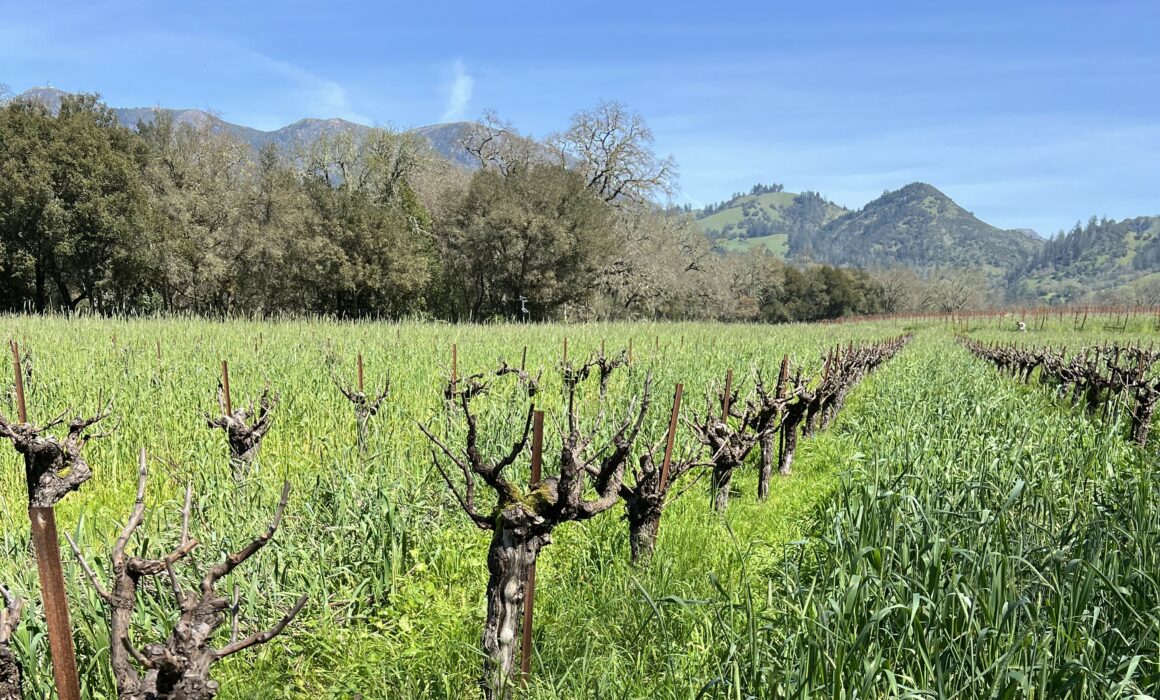Knights Valley, Sonoma County’s Most Elusive AVA
By Virginie Boone
Among the American Viticultural Areas in Sonoma County celebrating 40-year anniversaries last year, Knights Valley is perhaps the most elusive, a quiet, sparsely populated winegrowing area between Healdsburg and Calistoga known best for growing powerfully elegant Cabernet Sauvignon and other Bordeaux reds.
At the foot of 4,343-feet-elevation Mount St. Helena, Knights Valley is narrow and relatively high in elevation, with the Mayacamas Mountain Range bordering its eastern side. Ocean breezes flow through from the west, cooling the region with some significance; as Vérité and Anakota winemaker Pierre Seillan has said, “The vines breathe really well in Knights Valley.”
Seillan found the Knights Valley site that would become Anakota in the mid-1990s as he and Jess Jackson searched for sites to grow Grand Cru Cabernet Sauvignon. Two hillside estate vineyards were subsequently planted into small blocks and sub-blocks and are today responsible for two vineyard-designated wines, Helena Dakota and Helena Montana, as well as a blended Knights Valley Cabernet. Knights Valley grapes also go into the Vérité wines.
With warm days and cool nights – Knights Valley is the warmest AVA in Sonoma County – the diurnal shift here is pronounced, especially within a two-sided canyon of sorts where many of its premier sites are planted. This includes the vineyards of Peter Michael, Knights Bridge and Philippe Melka’s La Mekerra Vineyard, which was first planted in 2004 between 2,300 and 2,500 feet elevation to Cabernet Franc and Merlot. Across most of this area, soils are rich in volcanic ash and clay.
That swing in temperature allows for grapes to be bold and ripe with pronounced acidity and structure, with long finishes and lingering freshness, in addition to possessing a wild nature, a reflection of their wild surroundings. This is true in both the reds and the whites; Chardonnay and Sauvignon Blanc also do well in Knights Valley.
Beringer Vineyards was among the first winery post-Prohibition to farm in Knights Valley, finding a site with cobbled, alluvial soils on the valley floor to grow grapes in the mid-1960s. Its inaugural Knights Valley-designated wine came in 1974 (a 1973 Johannisberg Riesling Auslese!), nearly a decade before the region was made an official AVA. Its first Knights Valley Cabernet was made in 1976.
Peter Michael Winery planted both red and white grapes on the western slopes of Mount St. Helena beginning in 1982, with a pledge to keep the property under family stewardship for 100 years.
The Sugar Loaf Ranch comprised 600 acres when Sir Peter Michael bought it. What is today known as Knights Valley Ranch of Peter Michael Winery Estate is 750 acres with 149 acres of vineyard that reach as high as 1,900 feet. The back label of every Peter Michael Winery wine pays homage to this place: “Mountain vineyards, classical winemaking, limited production.”
The first wines off the property were made in 1988 – a Les Pavots Estate Cabernet Sauvignon blend and Cuvée Indigène Estate Chardonnay. A winery was built in 1989, followed soon after by the first vintage of L’Après-Midi Estate Sauvignon Blanc.
Knights Bridge Winery, one of only two wineries in the appellation open to visitors (the other being Peter Michael), found its 50 acres of hillside vineyards on a 100-acre parcel in Knights Valley in 2006, ideal for Chardonnay, Sauvignon Blanc, as well as Cabernet Sauvignon (and other Bordeaux reds), which grow in five different soil types.
A historical link to the region’s past is embodied in Knights Bridge Cellar Master Rafael Gonzalez, whose father worked in Beringer’s Knights Valley vineyard for decades.
The original petition for the Knights Valley AVA was submitted in February of 1982 and made official in October 1983 by the Knights Valley Wine Growers Committee, led by R.L. Maher, Robert Steinhauer and winemaker Myron Nightingale, all of Beringer Vineyards, among others.
It described the region as “one of the coastal intermountain valleys that surround the San Francisco Bay depression,” and delineated the AVA’s borders to encompass a watershed of approximately 39,258 acres, with the valley measured at 5.3 miles long and 1.8 miles wide at its widest point. It also included what it called a branch of Knights Valley known as Franz Valley, with waters in each of the valleys flowing westerly toward the Russian River.
Surrounded by mountains on all sides, acreage devoted to wine grapes at the time was about 1,000 acres, with Napa Valley to the east and Alexander Valley and Chalk Hill to the west. Weather station data showed that slightly warmer summer temperatures offset cooler springtime temperatures, providing Knights Valley with its own distinctive climatic conditions.
The valley is named for Thomas P. Knight, a native of Maine who bought land from José de Los Berryessa in 1853, a Mexican land grant known as Rancho Malacomes, which spanned 17,000 acres of land. It soon became known as Knights Valley. It’s been documented that Knight himself grew 17 acres of wine grapes, which were shipped to the Napa Valley, thought to have been planted in 1874.
The Hood Winery was constructed in 1878, the ruins of which are on the LaFranchi family property. It is thought to have operated until around 1910 and made wines under the brand name Geyser Vineyard and Winery.
[As an aside, the LaFranchi family’s 1,200-acre Oak Ridge Angus Ranch in Knights Valley was destroyed in the 2019 Kincade fire. The family has been settled in the area since 1912; third-generation Cheryl LaFranchi is bringing it back to life. The beef is sold through Sonoma County Meat Co.]
During Knight’s time, wheat growing and sheep raising were the two main industries, though there were also two mines, including the Great Western Quicksilver mine.
The first route to the Geysers went through Knights Valley with visitors guided by a local, William McDonald. The Geysers were discovered in 1847 and thought to have medicinal waters that could cure many ailments. They became an important destination. There was also a summer resort town called Kellogg around this time.
Grapegrowing went into decline between 1920 and the 1960s, with only about 100 acres of vines left by the time Beringer came along. Today, Knights Valley remains a small but vital link to Sonoma County’s past as well as to its present and future, growing high-quality grapes that go into world-class wines.


